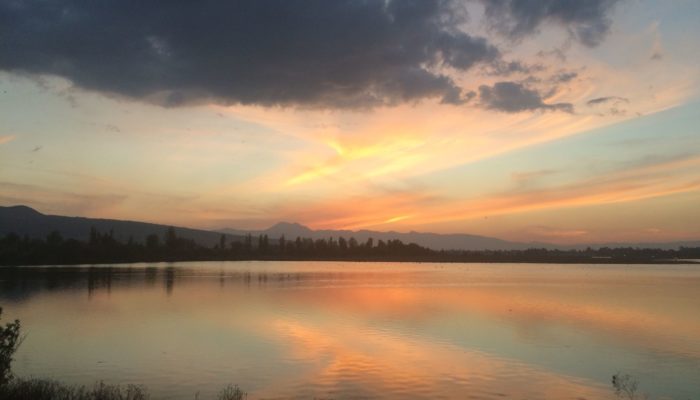
The effects of climate change on tropical regions are in parts still poorly understood, although the tropics include some of the most populated areas in the world. Now we created an age-depth model and a moisture reconstruction of the last 500,000 years from one of the oldest lakes in central Mexico, Lake Chalco.
Central Mexico, because of its mild climate and fertile soil, has been continuously populated by humans since primary civilization and remains an area with one of the highest population concentrations in the world. The combination of rapid population growth, anticipated future increases in air temperature and likelihood of droughts in central Mexico, suggest that this will remain a region strongly impacted by climate change. Improved understanding of both the mechanisms contributing to the present climate change and its consequences for the biosphere, including human society, not only provide the knowledge required to cope with its effects, but may also shed light on the forces that have driven similar events in the past.
In 2016, downhole measurements were conducted in an approximately 500 meters deep borehole in Lake Chalco in the outskirts of Mexico City. We used borehole geophysics, which measures the physical properties of sediments directly in a borehole, to extract paleoclimate signals from lacustrine deposits in the upper 300 meters to determine past climate conditions and variability. We also dated Lake Chalco’s sediments using astrochronology, a technique used for calibrating sediments using the Earth’s orbital insolation cycles. The results indicate that central Mexico regularly experienced dry periods during the last 500,000 years, when the Earth’s orbit was most circular.

Figure 1: Variation in moisture proxy versus the values of globally distributed benthic oxygen isotope records (LR04) indicates the role of precession derived-insolation in effective moisture content in central Mexico.
The specific setting of central Mexico, characterized by the emergence of a long series of volcanic arcs due to the subduction of Pacific Oceanic Plate beneath the North American continental Plate, has allowed the formation of an extensive interior drainage basin nearly one million years ago. In the present day, this geological formation is called the Valley of Mexico. Since its formation, water was retained in this basin, covering c. 1500 km2 of the valley floor. The water level in the lake oscillated in response to alternating warm and cool climate periods. The Earth has experienced cold (glacial) and warm (interglacial) on roughly 100,000-year cycles for the last ~million years. During warm periods, higher precipitation in central Mexico raised the lake water level to 100 meters and during cold periods, the water level dropped to a few meters because of droughts.
Before the arrival of the Spanish, the Basin of Mexico was occupied by the Aztec people, who built a large city called Tenochtitlan on and around the lake system. In the early 1600s CE, the Spanish drained most of the lake system in an attempt to control flooding. The present-day Lake Chalco is a shallow marsh that occupies an area of < 6 km2 in the south of Mexico City. An important source of water supply for Mexico City comes from underground aquifers formed in lacustrine sediments, which are currently being exhausted at an irreplaceable rate. As a result, Mexico City is rapidly sinking at about half a meter per year.
The lake sediments trace our planet’s insolation history, and preserves clues of past climate and environmental conditions. Through this study, we can identify how variable climate shifts were in the past and how the environment responded. The successful application of the methodology and the results can also help for future paleoclimate studies that may build upon our experience.
The Chalco Lake project was funded as part of the priority program “International Continental Drilling Program” (ICDP) of the German Research Foundation. Eleven national and international institutions from five countries are involved.
Please check out our article published in Quaternary Science Reviews:
Sardar Abadi, M., Zeeden, C., Ulfers, A. & Wonik, T. (2022). An astronomical age-depth model and reconstruction of moisture availability in the sediments of Lake Chalco, central Mexico, using borehole logging data. – Quaternary Science Reviews, 294: 107739. https://doi.org/10.1016/j.quascirev.2022.107739
